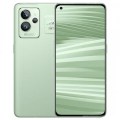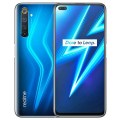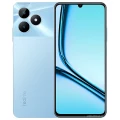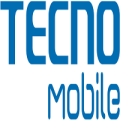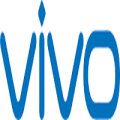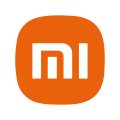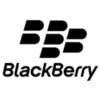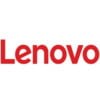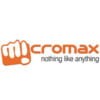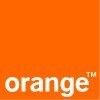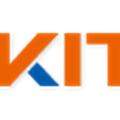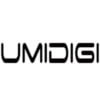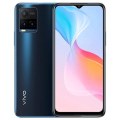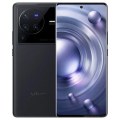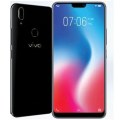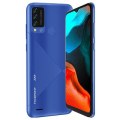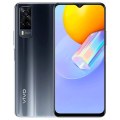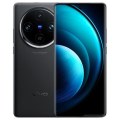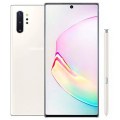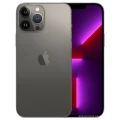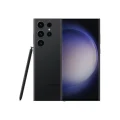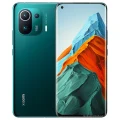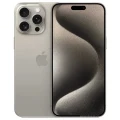Realme 3
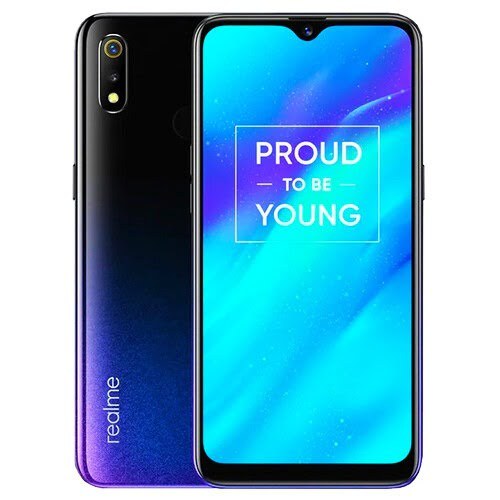


Realme 3 Price in Bangladesh
The Realme 3 Price in Bangladesh is BDT 14,990. This smartphone features a 6.22-inch IPS LCD display with a resolution of 720 × 1520 pixels. It comes with a dual-camera setup on the back, including a 13 MP primary sensor and a 2 MP secondary sensor, and a 13 MP front camera with Touch Focus. The Realme 3 is powered by the MediaTek MT6771 Helio P60 processor and offers options of 3GB or 4GB of RAM with 32GB or 64GB of internal storage, expandable via microSD. It includes a 4230 mAh Li-Ion battery and supports 4G dual-SIM connectivity. The Realme 3 Price in Bangladesh reflects its solid features, including fingerprint, accelerometer, proximity, and compass sensors, and is available in Black, Dynamic Black, and Radiant Blue colors.
Specifications
General
| Model | Realme 3 |
| Announced | 22 March, 2024 |
| Released | 22 March, 2024 |
| Status | Available |
| Official price | 4GB 64GB ৳14,990 |
| Unofficial price | 3GB 32GB ৳12,000 |
Design
| Dimensions | 156.1 x 75.6 x 8.3 mm (6.15 x 2.98 x 0.33 in) |
| Weight | 175 g (6.17 oz) |
| Colors |
Black, Dynamic Black, Radiant Blue |
Network
| Technology | GSM / HSPA / LTE |
| 2G Network |
GSM 850 / 900 / 1800 / 1900 - SIM 1 & SIM 2 |
| 3G Network |
HSDPA 850 / 900 / 2100 |
| 4G Network |
LTE band 1(2100), 3(1800), 5(850), 7(2600), 8(900), 20(800), 28(700), 38(2600), 40(2300), 41(2500) LTE band 1(2100), 3(1800), 5(850), 8(900), 38(2600), 40(2300), 41(2500) |
| GPRS <strong>GPRS</strong> (General Packet Radio Service) is a packet oriented mobile data service on the 2G and 3G cellular communication system's global system for mobile communications (GSM), Generally, GPRS is used for the purpose of wireless data transfer, such as sharing pictures and videos or browsing the Internet via a mobile phone connection. | |
| EDGE <strong>EDGE</strong> (Enhanced Data GSM Environment) is a wireless network technology generally considered the next step in the 2G network offers data transfer rates up to four times faster than ordinary GSM networks, Generally, EDGE is used for the purpose of wireless data transfer, such as sharing pictures and videos or browsing the Internet via a mobile phone connection. | |
| Speed | HSPA 42.2/5.76 Mbps, LTE-A (2CA) Cat12 600/50 Mbps |
Display
| Display Type <strong>Display Technology => </strong> A number of display technologies and types used in mobile phones => TFT (Thin Film Transistor), IPS (In-Place Switching), OLED (Organic Light Emitting Diode), AMOLED (Active-Matrix Organic Light-Emitting Diode), Super AMOLED (an even advanced version of AMOLED), Resistive Touchscreen (Resistive touchscreens contain two layer of conductive material with a very small gap between them which acts as a resistance), Capacitive Touchsceen (Capacitive touchscreen technology consists of a layer of glass coated with a transparent conductor) | IPS LCD capacitive touchscreen, 16M colors |
| Size | 6.22 inches, 96.6 cm2 (~81.8% screen-to-body ratio) |
| Resolution | 720 x 1520 pixels, 19:9 ratio (~270 ppi density) |
| Features |
Corning Gorilla Glass 3 |
Camera
Main camera
| Camera Setup | Dual |
| Primary <strong>Camera</strong> is able to capture photographs and usually videos, The most important characteristics of a camera are the resolution (measured in megapixels), lens focus type (fixed or automatic), higher megapixel cameras are known to capture higher quality photos, but not always a good measurement of the photos quality. |
13 MP, f/1.8, 1/3&quot;, 1.12µm, PDAF 2 MP, depth sensor |
| Features |
LED flash, HDR |
| Video | 1080p@30fps |
Selfie camera
| Camera Setup | Single |
| Primary <strong>Camera</strong> is able to capture photographs and usually videos, The most important characteristics of a camera are the resolution (measured in megapixels), lens focus type (fixed or automatic), higher megapixel cameras are known to capture higher quality photos, but not always a good measurement of the photos quality. |
13 MP, f/2.0, 1/3&quot;, 1.12µm |
Hardware
| Chipset <strong>Chipset</strong> is a group of integrated circuits designed to perform one or a more dedicated functions, often with real time computing constraints, Popular smartphones are equipped with more advanced embedded chipsets that can do many different tasks depending on their programming. | Mediatek MT6771 Helio P60 (12 nm) Mediatek Helio P70 (12nm) |
| CPU <strong>CPU</strong> (Central Processing Unit) mostly known as processors, CPU processes instructions in order to carry out certain functions that make your device operate properly. Processors are often described as the brain of computers, smartphones and tablets, Smartphones and tablets rely on processors to carry out their every task, Processors are an incredibly important factor in selecting any type of computing device, including your smartphone. | Octa-core (4x2.0 GHz Cortex-A73 & 4x2.0 GHz Cortex-A53) Octa-core (4x2.1 GHz Cortex-A73 & 4x2.0 GHz Cortex-A53) |
| GPU <strong>GPU</strong> (Graphics Processing Unit) is a single-chip processor designed to rapidly manipulate and alter memory to accelerate the creation of images in a frame buffer intended for output to a display, This includes things such as lighting effects, object transformations, and 3D motion. | Mali-G72 MP3 |
| RAM (Memory) <strong>RAM</strong> (Random Access Memory) is a type of computer memory that can be accessed randomly, any byte of memory can be accessed without touching the preceding bytes that allows information to be stored and accessed quickly from random locations. RAM is the most common type of memory found in computer systems, smartphones, tablets and other electronic devices. | 3/4 GB RAM |
| Internal Storage <strong>Internal Storage</strong> is a data storage space (flash memory) mostly used in smartphones, tablets and other electronic devices where operating system, apps, music, photos, videos, files and other user data Is stored. | 32/64 GB |
| Sensors <strong>Sensors</strong> are electronic components that detects and responds to some type of input from the physical environment. The specific input could be light, heat, motion, moisture, pressure and location, The output is generally a signal that is converted to use in computing systems, a location sensor, such as a GPS receiver is able to detect current location of your electronic device. |
Fingerprint -(rear-mounted), accelerometer, proximity, compass |
Connectivity
| Bluetooth <strong>Bluetooth</strong> is a wireless communications technology for exchanging data between mobile phones, headsets, computers and other network devices over short distances without wires, Bluetooth technology was primarily designed to support simple wireless networking of personal consumer devices. | 4.2, A2DP, LE |
| Infrared <strong>Infrared</strong> connectivity is an old wireless technology used to connect two electronic devices. It uses a beam of infrared light to transmit information and so requires direct line of sight and operates only at close range. | |
| USB | microUSB 2.0, USB On-The-Go |
| GPS <strong>GPS</strong> The Global Positioning System is a satellite-based radio navigation system, GPS permits users to determine their position, velocity and the time 24 hours a day, in all weather, anywhere in the world, In order to locate your position, your device or GPS receiver must have a clear view of the sky. | Yes, with A-GPS, GLONASS |
| NFC <strong>NFC</strong> (Near field communication) is a set of standards for smartphones and similar devices to establish peer-to-peer radio communications with each other by touching them together or bringing them into proximity, usually no more than a few inches. |
Battery
| Battery Type <strong>Battery Type => </strong> Cell phones run on various kinds of batteries depending on the manufacturer, phone size or shape and features. There are basically four types of cell phone batteries => Lithium Polymer, Lithium Ion, Nickel Metal Hydride and Nickel Cadmium. | Li-Ion (Lithium Ion) |
| Capacity <strong>Battery Capacity</strong> is a measure (typically in Amp-hr) of the charge stored by the battery, and is determined by the mass of active material contained in the battery. The battery capacity represents the maximum amount of energy that can be extracted from the battery under certain conditions. | 4230 mAh battery |
| Charging Charging | Fast battery charging 10W |
Realme 3 Review: A Budget Smartphone That Packs a Punch
Introduction to Realme 3
Released in March 2019, the Realme 3 quickly made waves in the budget smartphone market. Positioned as an affordable yet capable device, it aims to attract tech enthusiasts and everyday users alike. With its modern design, robust performance, and competitive price point, the Realme 3 promises a lot on paper. But does it deliver? This comprehensive review will help you decide if the Realme 3 is the right smartphone for you.
Design and Build Quality
Sleek and Solid
The Realme 3 boasts a sleek design that rivals higher-end models. Constructed from polycarbonate, it features a glossy finish that mimics glass, giving it a premium look without the fragility. The device feels sturdy in hand, with rounded edges that enhance its ergonomic appeal.
Ergonomics and Usability
Holding the Realme 3 feels natural, thanks to its well-thought-out design. The weight is evenly distributed, ensuring that it doesn’t feel too heavy or bulky. The buttons are tactile and well-placed for ease of use. Additionally, the rear-mounted fingerprint scanner is both fast and conveniently located.
Color Options
Realme offers the device in various color options, including Dynamic Black, Radiant Blue, and Classic Black. Each variant has its unique gradient finish, adding a touch of flair to the phone’s overall aesthetics.
Display and Multimedia
Quality and Resolution
Sporting a 6.2-inch IPS LCD screen with a resolution of 720×1520 pixels, the Realme 3 delivers decent display quality. While it may not offer Full HD resolution, the screen still provides vibrant colors and good contrast, making it suitable for media consumption.
Brightness and Outdoor Visibility
With a maximum brightness of around 450 nits, the Realme 3 performs well even under direct sunlight. The adaptive brightness feature adjusts the screen’s luminosity based on ambient lighting, ensuring a comfortable viewing experience at all times.
Audio Performance
The single bottom-firing speaker offers acceptable sound quality for a budget device. While it may not deliver high-fidelity audio, it is loud enough for casual listening. For a better audio experience, using a pair of quality earphones is recommended.
Camera Performance
Dual-Camera Setup
The Realme 3 features a dual-camera system on the back, comprising a 13MP primary sensor and a 2MP depth sensor. This setup allows for decent photo quality and effective portrait shots with bokeh effects.
Photo Quality
In good lighting conditions, the Realme 3 captures detailed and vibrant photos. The AI scene recognition feature further enhances the images by adjusting settings based on the scene. However, in low light, the camera struggles, resulting in grainy and less detailed photos.
Video and Selfie Capabilities
The smartphone supports Full HD video recording at 30fps. While it lacks advanced stabilization features, the video quality is acceptable for casual use. The 13MP front camera delivers good selfies, aided by AI beautification modes that cater to various skin tones.
Battery Life and Charging
Battery Capacity
Equipped with a 4230mAh battery, the Realme 3 offers impressive battery life. It easily lasts a full day of moderate to heavy use, including social media browsing, gaming, and video streaming.
Charging Speed
The included 10W charger takes approximately 2 hours to fully charge the device. While not the fastest charging solution on the market, it is reasonable given the phone’s price point. Additionally, the power-efficient hardware contributes to extended battery life.
Power Management
Realme 3’s software includes various power-saving modes that help extend battery life during critical moments. The AI battery management system optimizes power consumption based on user habits, further enhancing endurance.
Performance and User Experience
Hardware Specs
Under the hood, the Realme 3 is powered by the MediaTek Helio P60 processor, coupled with up to 4GB of RAM. This combination ensures smooth performance in daily tasks and moderate gaming.
Software and UI
Running on ColorOS 6, based on Android 9.0 Pie, the user interface is intuitive and feature-rich. While some may find the custom UI a bit heavy, it offers numerous customization options and useful features like gesture navigation and app cloning.
Multitasking and Gaming
The Realme 3 handles multitasking with ease, thanks to its efficient memory management. Casual games run smoothly, and even more demanding titles like PUBG Mobile are playable at medium settings without significant lag.
Unique Features and Standout Capabilities
AI Capabilities
One of the standout features of the Realme 3 is its AI integration. From camera enhancements to battery management, AI plays a crucial role in improving the overall user experience.
Nightscape Mode
The dedicated Nightscape mode leverages AI and multi-frame synthesis to capture better low-light photos. While not perfect, it significantly improves photo quality in dim environments compared to standard modes.
Secure Face Unlock
In addition to the fingerprint scanner, the Realme 3 offers face unlock, which is both fast and reliable. It’s a convenient option for users who prefer biometric authentication.
Price-Performance Ratio
Competitive Pricing
Starting at around $150, the Realme 3 offers excellent value for money. It combines decent performance, good build quality, and a range of features typically found in more expensive devices.
Comparison with Competitors
When compared to other budget smartphones like the Xiaomi Redmi Note 7 and Samsung Galaxy M20, the Realme 3 holds its own. While it may not excel in every category, its overall package makes it a strong contender in the budget segment.
Long-Term Investment
For users looking for a reliable, budget-friendly smartphone that doesn’t compromise on essential features, the Realme 3 is a solid choice. Its durability and performance ensure it remains relevant for at least a couple of years.
Final Verdict
Strengths and Weaknesses
The Realme 3 excels in areas such as battery life, design, and user experience. However, it does have its limitations, particularly in camera performance under low light and the absence of Full HD resolution.
Who Should Buy It?
The Realme 3 is ideal for students, young professionals, and budget-conscious consumers who seek a capable and stylish smartphone without breaking the bank. If you prioritize battery life and design over high-end camera performance, this phone will serve you well.
Recommendation
Given its competitive pricing and well-rounded features, the Realme 3 is a worthy investment for anyone in the market for a budget smartphone. It strikes a balance between affordability and functionality, making it a compelling option in its segment.
Share your thoughts and experiences with the Realme 3 in the comments below! Your feedback helps us create better content. Plus, don’t forget to share this review with your friends and fellow tech enthusiasts on social media.
